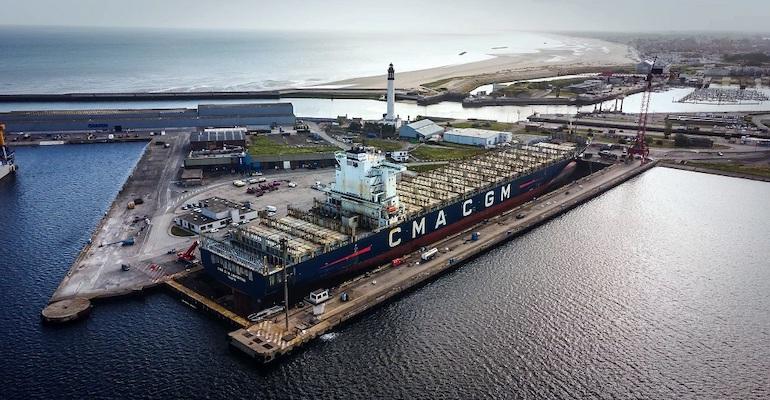The upgrades will take place at Damen Shiprepair Dunkerque (DSDu) and Damen Shiprepair Amsterdam (DSAm).
Nine dockings of CMA CGM vessels are scheduled for this year, five at DSDu and four at DSAm. Three of these will be for the installation of bow bulbs, with the first being on the liquefied natural gas (LNG)-fueled containership Arctic. The 120-tonne bulb has been fabricated at DSAm and will be fitted there shortly.
While the bulb retrofits are expected to yield savings in fuel consumption of between 5 to 10%, CMA CGM is looking at other upgrades that can further contribute to the efficiency of their vessels.
Damen will also provide propeller upgrades, modifications to the propeller nozzle, and silicone paint. Each of these upgrades are said to deliver additional fuel savings of between 2 and 5%. Three of the vessels will also be equipped to access shore power, thereby reducing their emissions when alongside ports that offer the service. This is in line with CMA CGM’s commitment to cleaner operations.
“We look forward to a long-term partnership between CMA CGM and Damen,” says Freek van den Eijkel, Commercial Manager at DSAm. “DSDu already has a relationship with CMA CGM, but together DSAm and DSDu can deliver the services that CMA CGM requires with their excellent facilities and easy access to and from the major shipping routes.”
Earlier on, the company created a Special Fund for Energies, backed by a five-year $1.5 billion budget, to accelerate its energy transition and achieve net-zero carbon by 2050.
Copyright © 2024. All rights reserved. Seatrade, a trading name of Informa Markets (UK) Limited.
Add Seatrade Maritime News to your Google News feed.  |

